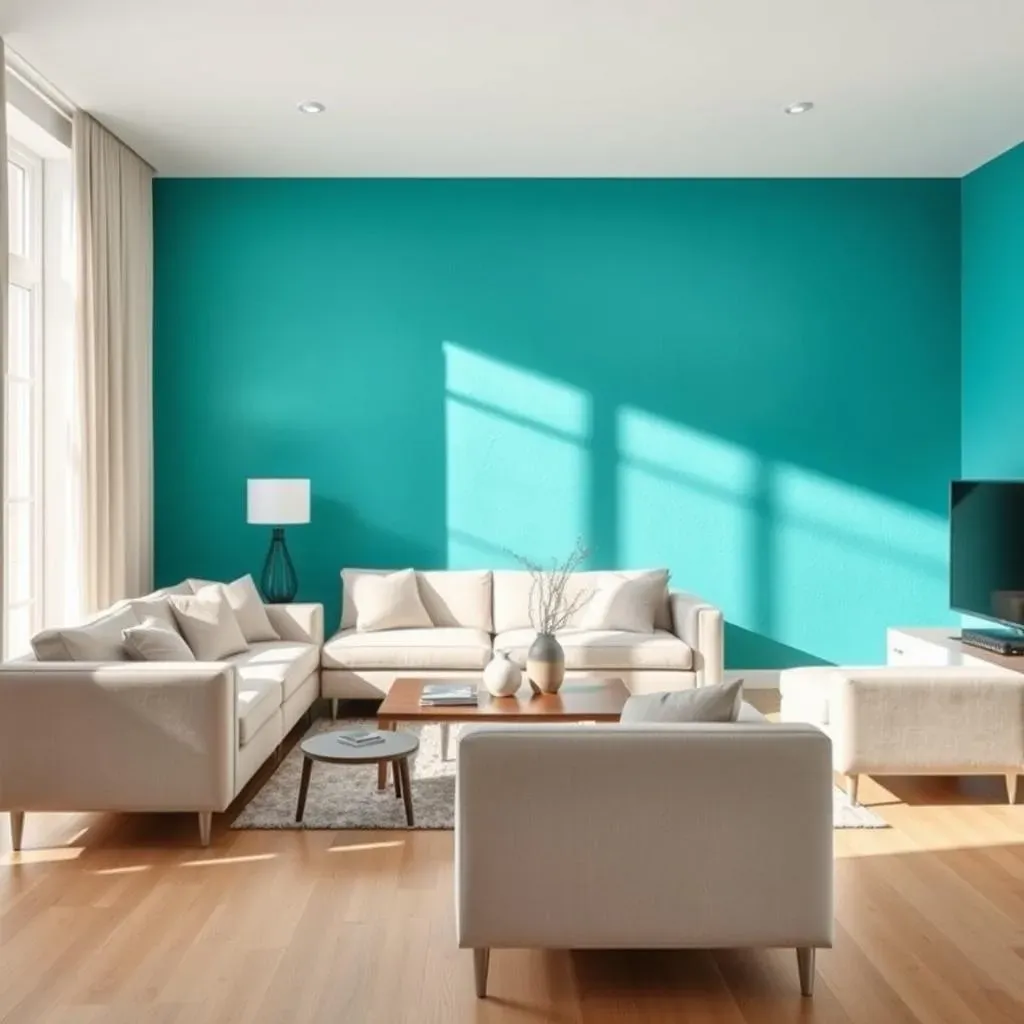Table of Contents
Tired of staring at the same four walls? Want to inject some personality and pizzazz into your living space without a complete overhaul? Enter the world of wall accent paint ideas, a simple yet powerful way to transform any room from bland to grand. An accent wall is more than just a splash of color; it's a strategic design element that can highlight architectural features, define spaces, and express your unique style.
Best Accent Wall Colors: Choosing the Perfect Shade
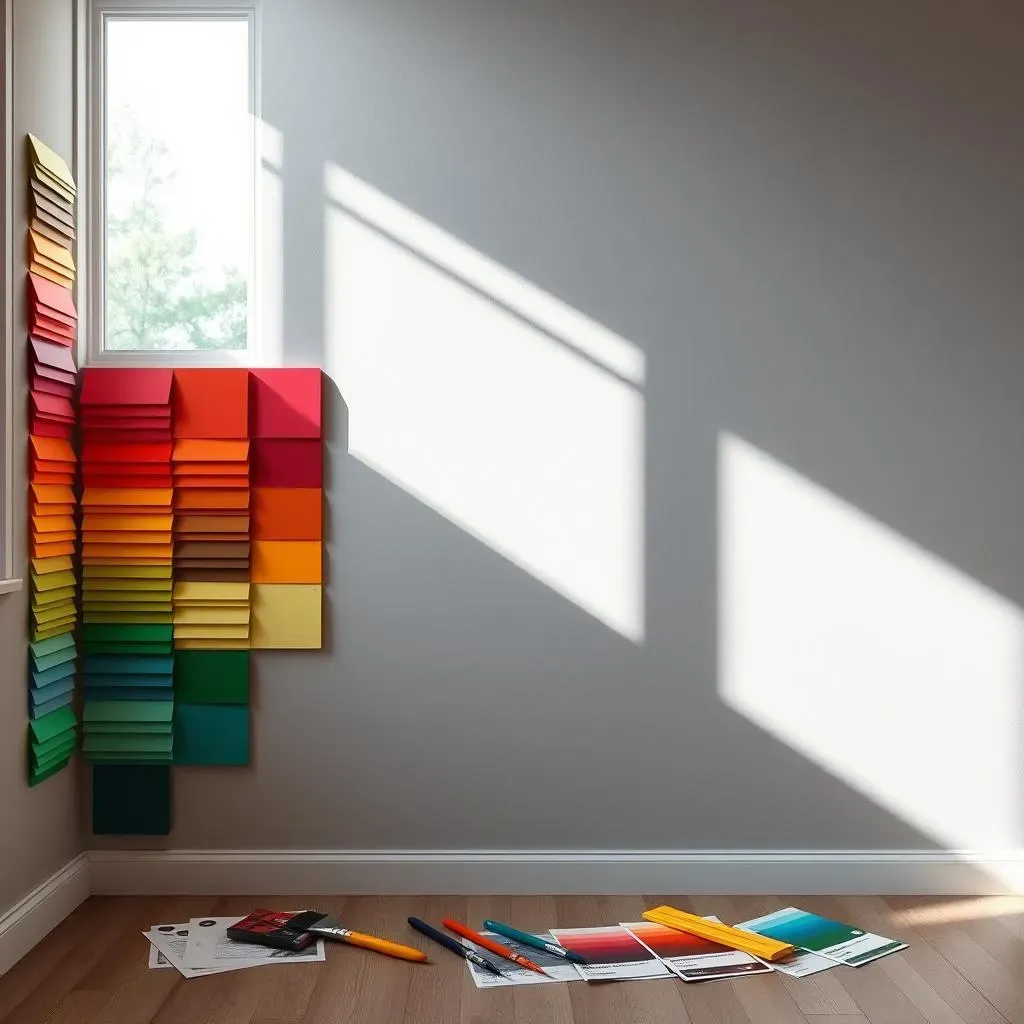
Best Accent Wall Colors: Choosing the Perfect Shade
Understanding Color Psychology
Choosing the right color for your accent wall isn't just about aesthetics; it's about understanding how colors impact mood and atmosphere. Think about the feeling you want to evoke in the room. Warm colors like reds, oranges, and yellows tend to create a cozy and energetic vibe, perfect for dining rooms or living spaces. Cool colors, such as blues, greens, and purples, promote relaxation and serenity, making them ideal for bedrooms or bathrooms.
Neutral shades like grays, beiges, and whites offer a sophisticated and versatile backdrop that can be easily accessorized with pops of color. However, don't be afraid to experiment! A bold, unexpected color can add a touch of drama and personality to any space. Consider the existing elements in your room – furniture, flooring, and artwork – and choose a color that complements and enhances the overall design.
Factors to Consider Before You Paint
Before you rush to the paint store, take a moment to assess the room's lighting and orientation. Natural light plays a crucial role in how a color appears. A north-facing room tends to have cooler, softer light, so warmer colors can help balance the space. South-facing rooms receive more direct sunlight, allowing you to experiment with cooler shades without making the room feel cold.
Also, think about the size of the room. Dark colors can make a small room feel even smaller, while light colors can create an illusion of spaciousness. Don't forget to test paint samples on the wall before committing to a full gallon. Observe how the color looks at different times of the day and under different lighting conditions. This will help you avoid any unpleasant surprises and ensure you choose a color that you'll love for years to come.
Factor | Consideration |
|---|---|
Room Size | Light colors for small rooms, dark colors for larger rooms (optional) |
Lighting | North-facing rooms benefit from warmer colors, south-facing rooms can handle cooler colors |
Existing Decor | Choose a color that complements furniture, flooring, and artwork |
20 Accent Wall Ideas for Every Room: Inspiration for Your Home
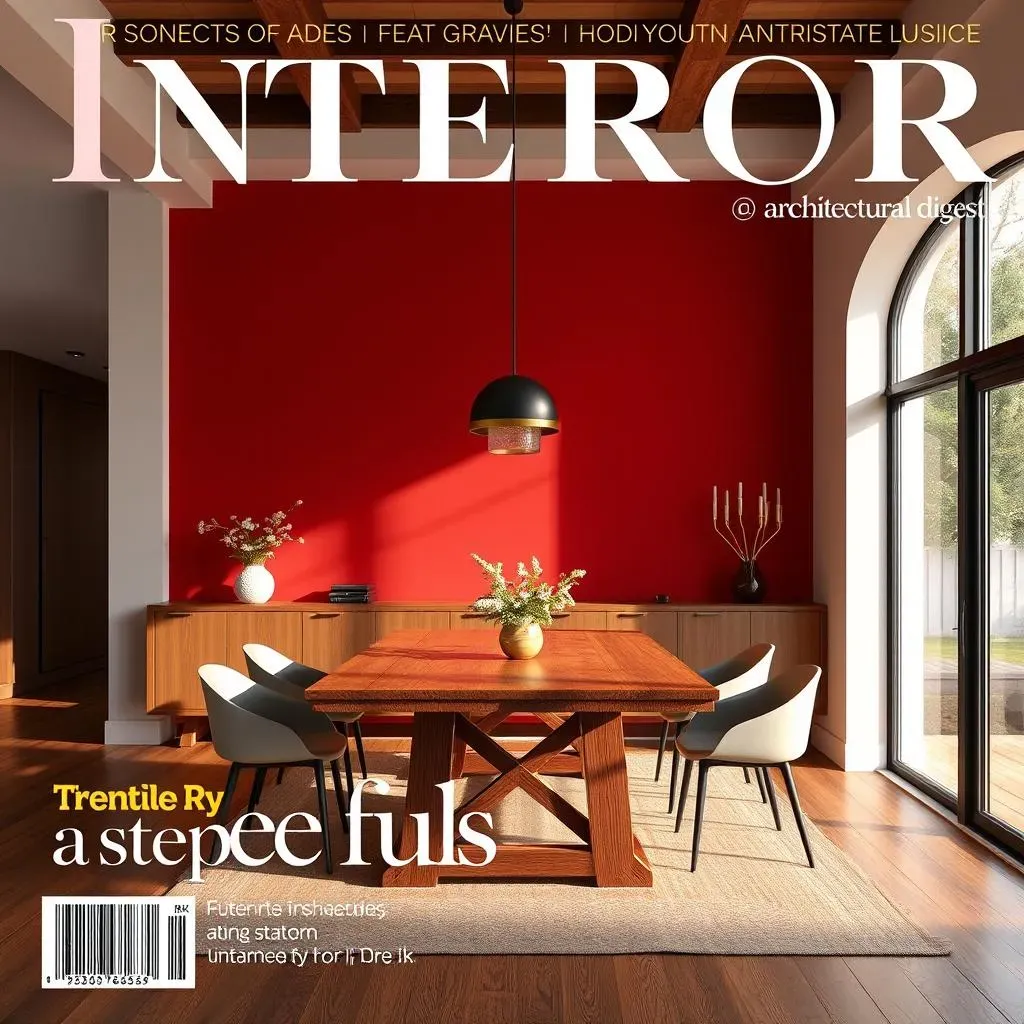
20 Accent Wall Ideas for Every Room: Inspiration for Your Home
let's get into the fun part – the actual ideas! I'm so excited to share these with you because there's seriously something for everyone. Whether you're after a cozy vibe, a modern edge, or a touch of elegance, an accent wall can deliver. Remember, the key is to tailor the idea to your own taste and the specific character of your room.
Let's start with the dining room. Imagine a deep red accent wall behind a rustic wooden table, creating a warm and inviting atmosphere for dinner parties. Or, for a more sophisticated look, consider a charcoal gray accent wall with metallic gold accents. In the bedroom, a calming blue or lavender accent wall behind the bed can promote relaxation and restful sleep. For living spaces, think about using a bold geometric pattern or a textured paint to add visual interest. And don't forget the kitchen and bathroom! A bright yellow or turquoise accent wall can add a pop of energy to these often-overlooked spaces.
Dining Room Delight
The dining room is a fantastic place to experiment with bold colors and dramatic textures. A deep jewel tone like emerald green or sapphire blue can create a luxurious and inviting atmosphere. Consider using a textured paint or wallpaper to add depth and dimension to the wall.
- Color Suggestion: Rosy Apple 2006-30 (Benjamin Moore)
- Style Tip: Pair with natural wood furniture and warm lighting.
Bedroom Bliss
In the bedroom, the goal is to create a serene and relaxing environment. Soft, muted colors like pale blue, lavender, or sage green are excellent choices. A subtle textured paint or a wall mural can add a touch of visual interest without overwhelming the space.
Color Palette | Mood | Best For |
|---|---|---|
Pale Blue & Gray | Calming, Serene | Master Bedroom, Guest Room |
Lavender & White | Relaxing, Dreamy | Teen Bedroom, Nursery |
Living Space Lift
The living room is where you can really let your personality shine. A bold geometric pattern, a vibrant color like turquoise or coral, or a sophisticated gray with metallic accents can all make a statement. Consider using a gallery wall to showcase your favorite artwork and create a focal point.
- Color Suggestion: A warm gray with a hint of blue.
- Style Tip: Use contrasting throw pillows and blankets to tie the room together.
Kitchen Kick
Don't be afraid to add a pop of color to your kitchen! A bright yellow or turquoise accent wall can energize the space and make it feel more cheerful. Consider using a chalkboard paint to create a fun and functional accent wall where you can write grocery lists or leave messages.
Bathroom Boost
Even a small bathroom can benefit from an accent wall. A deep blue or green can create a spa-like atmosphere, while a bright white or gray can make the space feel larger and more airy. Consider using a waterproof paint or tile to protect the wall from moisture.
Color | Effect |
|---|---|
Deep Blue | Spa-like, Relaxing |
Bright White | Spacious, Clean |
DIY Accent Wall Techniques: Paint, Texture, and More
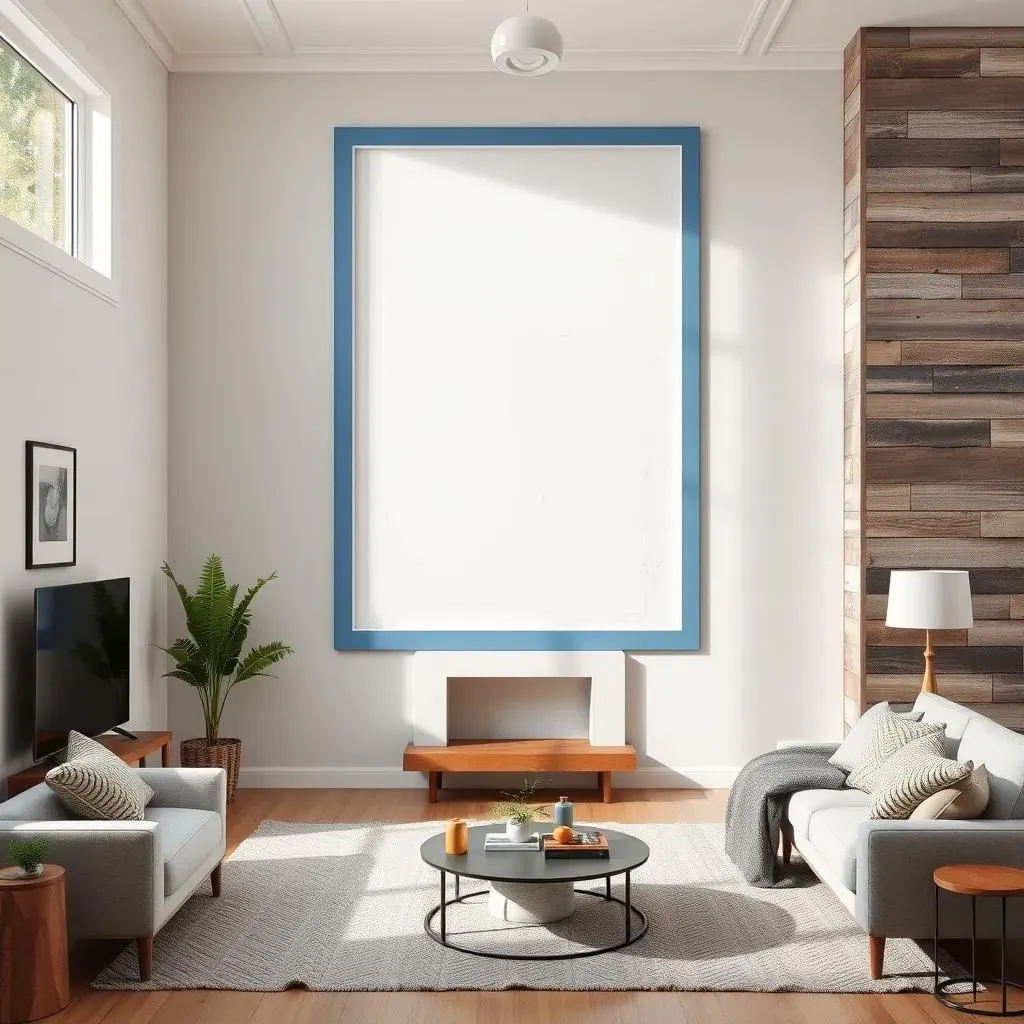
DIY Accent Wall Techniques: Paint, Texture, and More
Paint Like a Pro
So, you've picked your color, now it's time to get your hands dirty! Before you even think about dipping that brush, prep is key. Trust me, a little elbow grease now will save you headaches later. Start by cleaning the wall thoroughly – remove any dust, dirt, or cobwebs. Then, grab some painter's tape and carefully tape off the edges of the wall, including the ceiling, trim, and any adjacent walls. This will give you a crisp, clean line and prevent any unwanted paint splatters.
Next, prime the wall with a good quality primer. Primer helps the paint adhere better, provides a uniform surface, and can even help block stains. Once the primer is dry, you're ready to paint! Use a high-quality brush and roller for the best results. Apply the paint in thin, even coats, allowing each coat to dry completely before applying the next. And remember, patience is a virtue! Don't rush the process, and you'll be rewarded with a beautiful, professional-looking accent wall.
Textural Wonders
Want to take your accent wall to the next level? Consider adding some texture! There are tons of ways to create a textured accent wall, from simple techniques like using a textured roller to more advanced methods like applying joint compound or plaster. A textured roller can create a subtle, all-over pattern that adds depth and visual interest to the wall. Joint compound or plaster can be used to create a variety of effects, from a smooth, Venetian plaster look to a more rustic, textured finish.
Another popular option is using wood planks or shiplap to create a rustic or farmhouse-style accent wall. This is a relatively easy DIY project that can add a ton of character to any room. You can also use wallpaper to create a textured effect. There are many textured wallpapers available, from subtle grasscloth to bold, geometric patterns. No matter what technique you choose, be sure to follow the manufacturer's instructions carefully and practice on a small area first to get a feel for the process.
Technique | Materials | Difficulty | Effect |
|---|---|---|---|
Textured Roller | Textured roller, paint | Easy | Subtle pattern |
Joint Compound | Joint compound, trowel, sandpaper | Medium | Venetian plaster, rustic texture |
Wood Planks | Wood planks, nails or adhesive | Medium | Rustic, farmhouse style |
Frequently Asked Questions: Mastering Wall Accent Paint Ideas
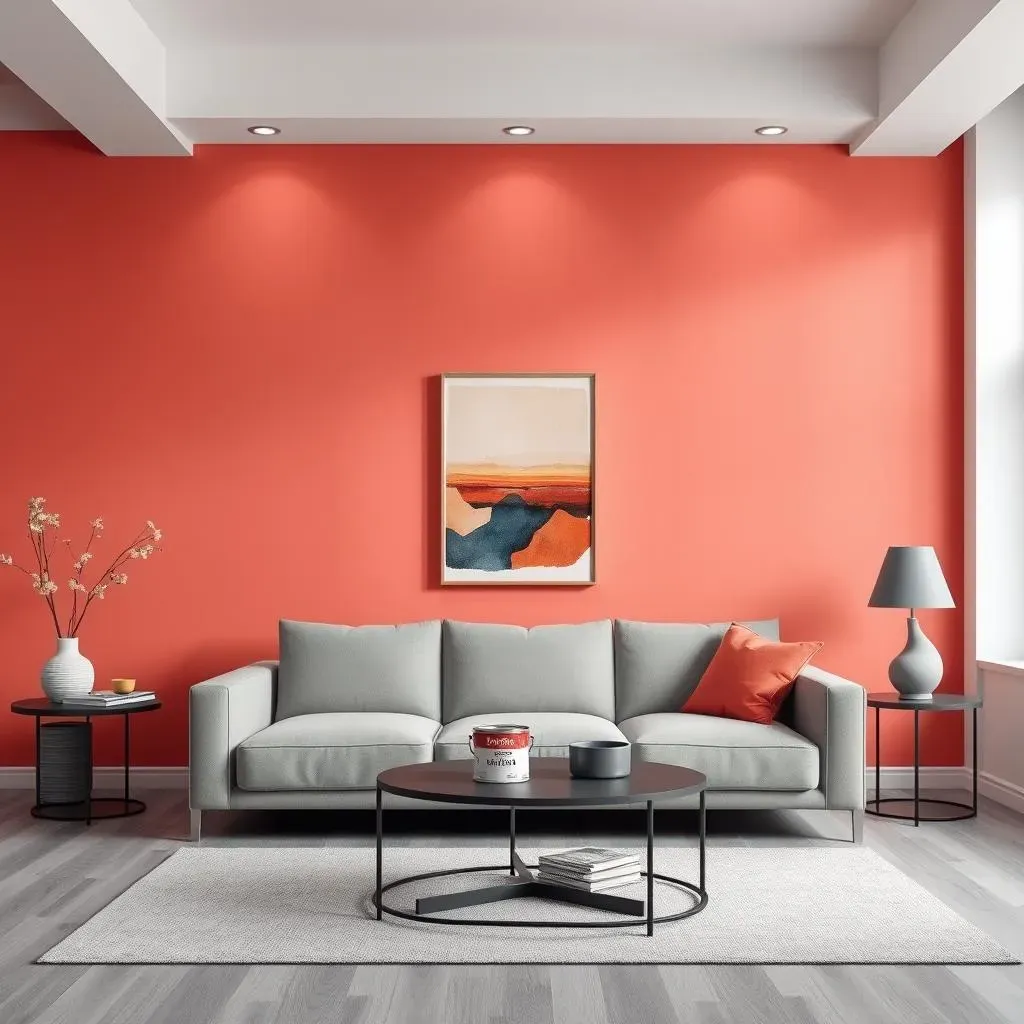
Frequently Asked Questions: Mastering Wall Accent Paint Ideas
What wall should I choose for an accent wall?
Ah, the million-dollar question! Generally, you want to pick a wall that naturally draws the eye, a focal point in the room. It could be the wall behind your bed, the one with a fireplace, or even a wall that has interesting architectural details. If the room lacks a clear focal point, choose the largest uninterrupted wall. Avoid walls with lots of windows or doors, as they can break up the accent and make it less effective.
Also, think about the purpose of the room. In a living room, the accent wall might be behind the sofa or entertainment center. In a dining room, it could be the wall where you hang a statement piece of art. The key is to choose a wall that will enhance the overall design and create a sense of balance in the space.
Should my accent wall be lighter or darker than the other walls?
That depends on the look you're going for! A darker accent wall will make the room feel cozier and more intimate, while a lighter accent wall will create a sense of spaciousness. If you want to make a bold statement, go for a high-contrast color that is significantly darker or lighter than the other walls.
If you prefer a more subtle effect, choose a color that is just a few shades darker or lighter than the surrounding walls. You can also use different sheens of the same color to create a subtle accent wall. For example, you could paint the other walls in a matte finish and the accent wall in a satin or semi-gloss finish. This will add a touch of visual interest without being too overpowering.
Effect | Color Choice |
|---|---|
Cozy, Intimate | Darker Accent Wall |
Spacious, Airy | Lighter Accent Wall |
Subtle Accent | Similar Shade, Different Sheen |
How much paint do I need for an accent wall?
This depends on the size of your wall, but a good rule of thumb is that one gallon of paint will cover approximately 350-400 square feet. Measure the height and width of your wall in feet, multiply the two numbers together to get the square footage, and then divide by 350 to determine how many gallons of paint you'll need.
It's always a good idea to buy a little extra paint, just in case you need to touch up any areas or apply a second coat. You can also use an online paint calculator to get a more precise estimate. And don't forget to factor in the primer! You'll need to prime the wall before painting, so be sure to buy enough primer to cover the entire surface.
Can an accent wall make a room look bigger or smaller?
Absolutely! Color perception is a powerful tool in interior design. Lighter colors tend to reflect more light, making a room feel more open and spacious. Darker colors absorb light, which can make a room feel cozier but also potentially smaller.
If you want to make a small room feel bigger, opt for a light-colored accent wall. Conversely, if you have a large room that feels too impersonal, a darker accent wall can help create a more intimate and inviting atmosphere. You can also use horizontal stripes on an accent wall to make a room appear wider, or vertical stripes to make the ceiling seem higher.
- Light Colors: Make a room feel bigger and more open.
- Dark Colors: Make a room feel cozier and more intimate.
- Horizontal Stripes: Make a room appear wider.
- Vertical Stripes: Make the ceiling seem higher.
Conclusion: Embrace the Power of Wall Accent Paint Ideas
As you've seen, wall accent paint ideas offer a fantastic way to revitalize your home, adding depth, character, and a touch of personal flair. From bold reds in the dining room to calming blues in the bedroom, the possibilities are truly endless. Don't be afraid to experiment with different colors, textures, and techniques to create an accent wall that reflects your unique style and enhances your living space. So, go ahead, pick up a brush, unleash your creativity, and transform your home one accent wall at a time!
